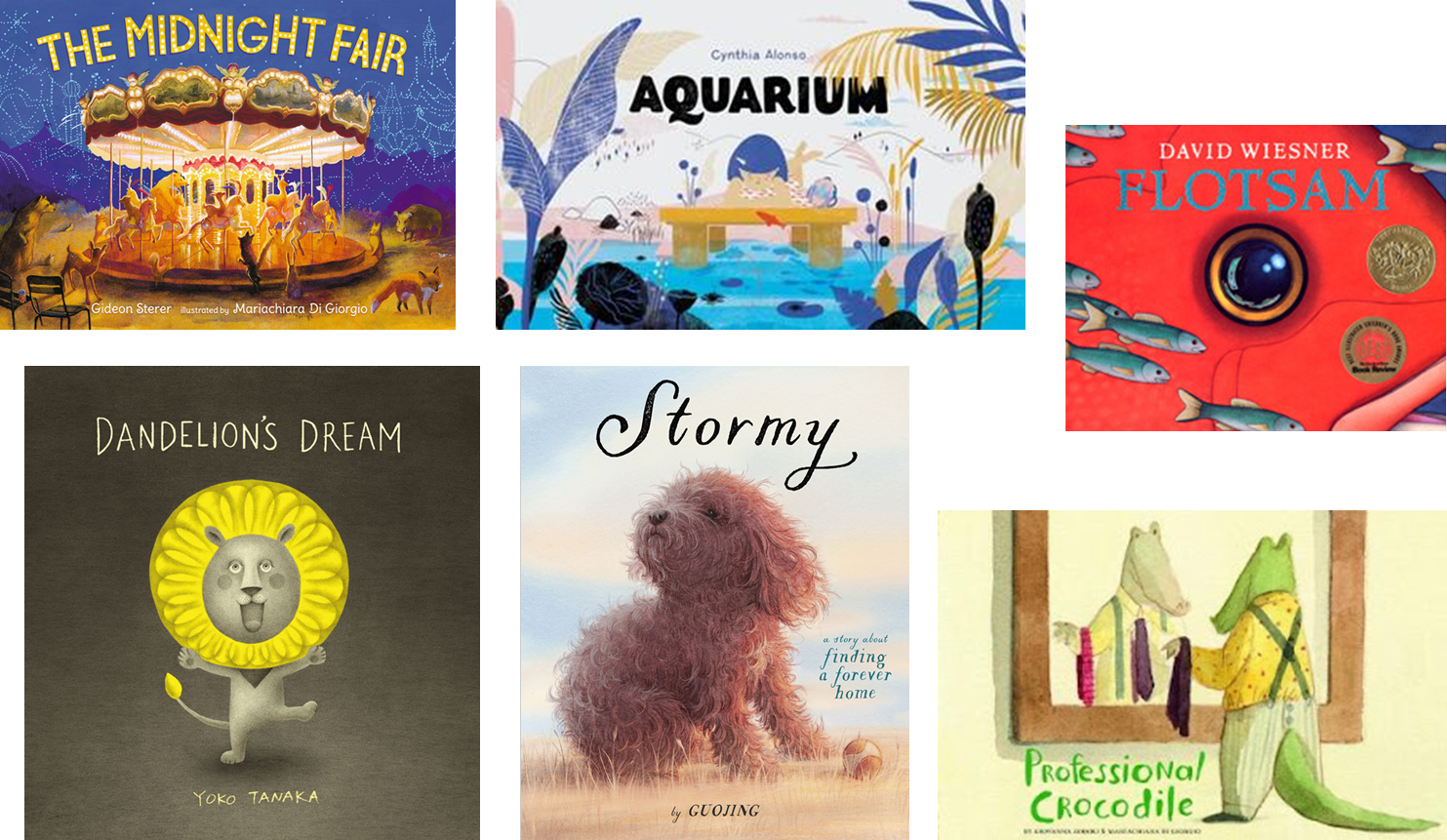Amira finds a tiny plant in her suitcase. Why does she have a suitcase? Where do Amira and her family seem to live? This is a strange place filled with make-shift shelters and dirt floors yet it seems to be her new home. Amira, we read, had been looking for a place to hide but now, instead, she has a tiny life to nurture. She makes sure the fragile seedling has sunlight and water. Each day the tiny plant grows a little bigger and curiosity about her suitcase plant draws attracts the attention of living in this place. Amira meets Nala and she shares the happiness of watching her plant grow. Nala shares a seed and they plant this inside the suitcase. Then Tien joins the girls and he passes on another small seed.
Over the following pages we watch as the plants grow so tall they no longer fit into their suitcase.
So "together they dug a new home for the plants. Together they smiled at the flourishing leaves. And together they climbed up, up, up towards the sun."
From the front cover this book looks so inviting. The colours are appealing and the design elements will help make a reader curious. There are hints of a journey along with the small shadow of a plant. I agree with the words of the blurb which say this is "a gentle, thought-provoking tale about friendship and hope".
I love the way the cover looks like the suitcase – the words ‘tratar con cuidado’ means ‘handle with care’ in Spanish. The end papers match the suitcase lining.
On the half title page, it is clear the suitcase is heavy – the story has started before we even reach the first page of print. Amira does not talk about where she lives or why but the background images of corrugated iron and dirt and the way she has no shoes speak volumes about her situation and the situation of her family. This is reinforced when we see the mattress on the floor of their ‘new home’ and the way the family possessions are in cloth bundles and recycled boxes.
Please take a few minutes to read this piece where the author talks about the inspiration for this book.
Every line of the text has been placed carefully on the page and the illustrations move from large to small to double page spreads. There is a strong emotional component to this story. When Amira smiles at her plant something blossoms inside her. And there is a sense of hope conveyed through the growth of the plant and the new friendships. The language is also very special – word placement such as ‘a finger of sunlight’; ‘a bud of warmth’ and ‘Amira’s hand quivered and tingled’.
I like the way the image from the title page is repeated near the end but this time with the addition of her two new friends. The sequence page where we see the plant growing is another page is the perfect way to show the passing of time. This book will also give readers things to think about – Why was Amira hiding? Where is this happening? And most importantly What will happen next?
This is one of those deceptively simple books that, with close reading, reveals a deeper story. You could share this book with your youngest students but it is your older upper primary students who will see further possibities as you guide the discussion.
Amira's Suitcase has been shortlisted for the 2022 CBCA Book of the Year awards (Early Childhood). Here are a set of teaching notes where you will find some discussion questions which might be useful for a group of very young children. Read the judges report here.
I would pair this book with any of these:
You could also explore books which feature seeds and plant growth:




























































